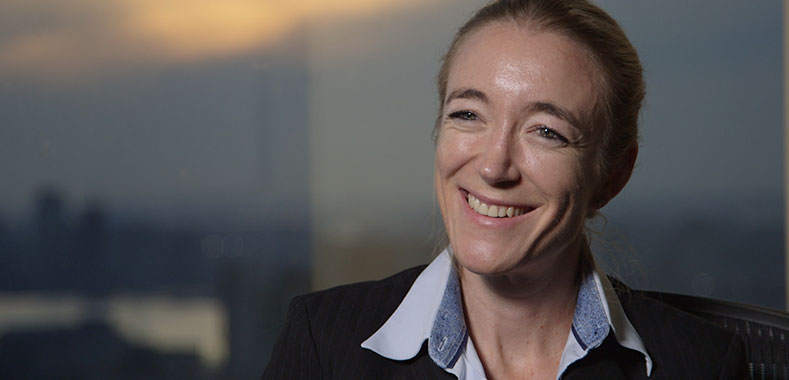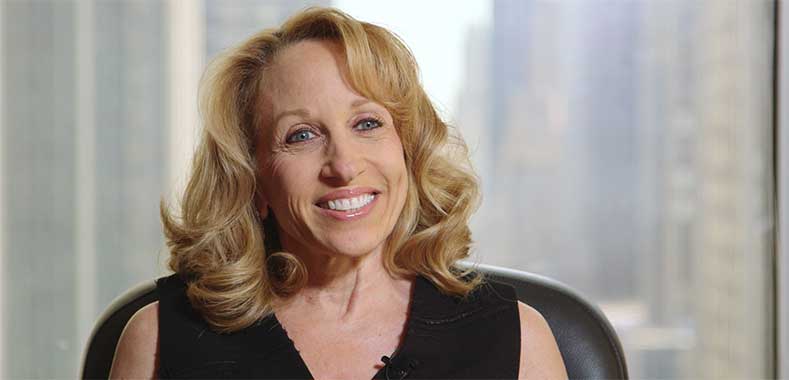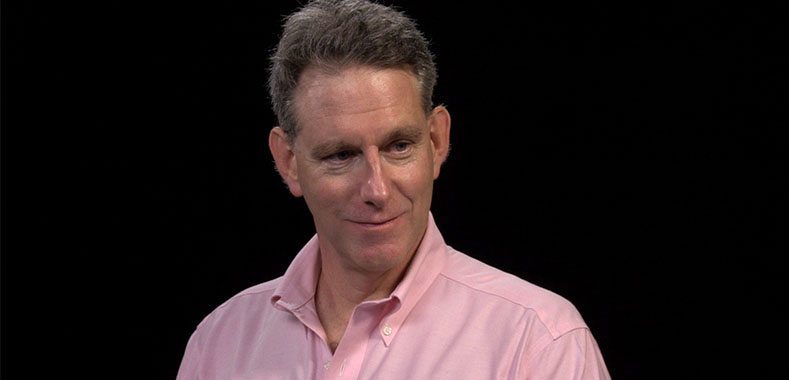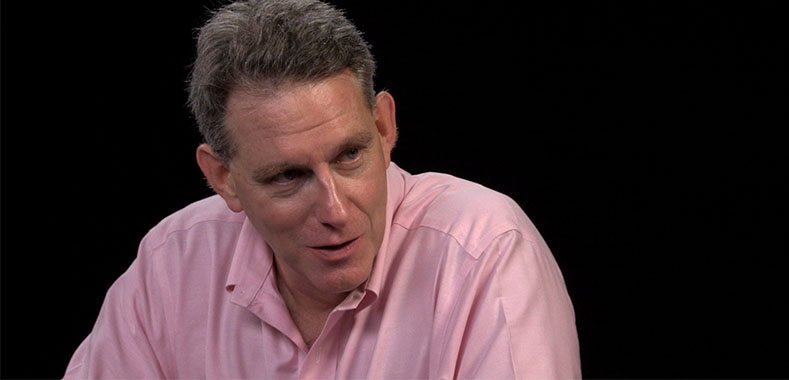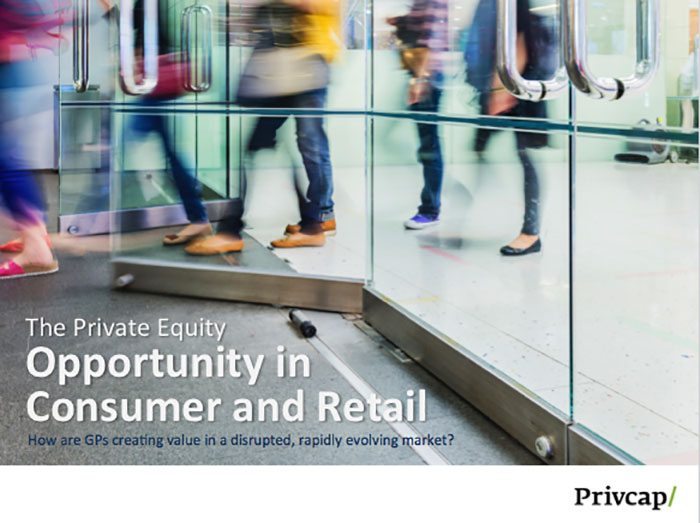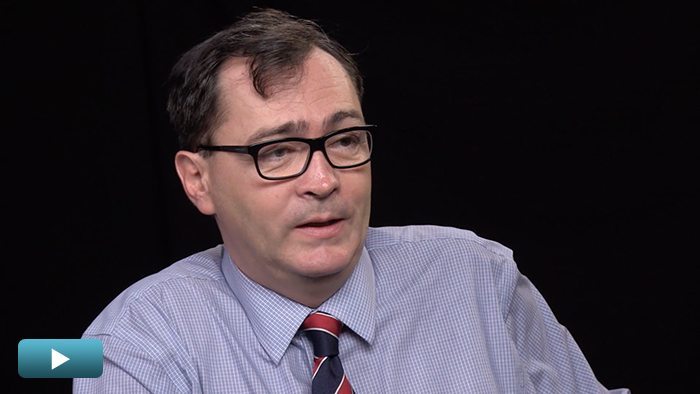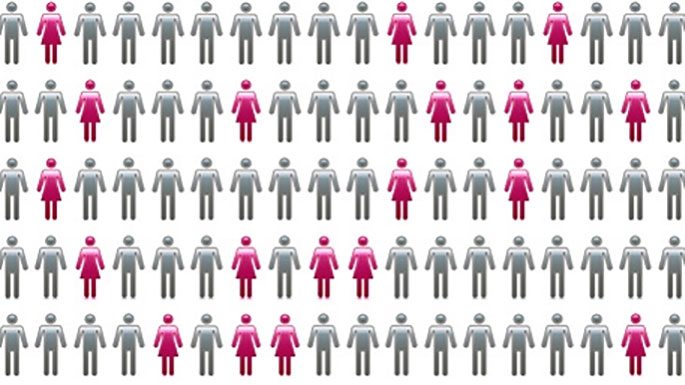The Big Trends Driving Consumer & Retail
Two experts discuss what the next recession might look like, and the right consumer sectors to invest in to weather the storm.
Transcript Download Transcript
Macro Trends and Consumer & Retail
The Real Economy
Matt Malone, Privcap: Very happy to be joined today by Sam Katz, Managing Partner of TZP Group, and Joe Brusuelas, Chief Economist at RSM. Welcome to the program.
Unison: Thank you.
Malone: We’re going to talk today about the consumer opportunity in private equity. Joe, let’s start off by talking a bit about the macro environment, particularly on the demand side for consumer goods for the global consumer.
Joe Brusuelas, RSM: OK. We’ve seen a fairly strong rebound in the second quarter of 2016 compared to what was very sluggish. The first three months of the year were growth and overall household spending really only moved around 2%. What you’re seeing now specifically is a sustained increase in job, composition of job creation is much better, tilted toward the higher end. You’re seeing solid wage growth for the first time in the entire business cycle. Of course, amidst very low gasoline prices, which boost overall disposable income. We’re seeing that across most sectors with the exception of apparel, and we can get to that later. But it makes me very encouraged about, at least, the second and third quarter of 2016.
Malone: In your portfolio Sam, how are you seeing that play out—those macro factors? Is it consistent with the picture Joe’s painting?
Sam Katz, TZP Group: We’re a lower middle market–focused firm and part of the attraction of that, from a private equity perspective, is the ability to find businesses that are less correlated to the overall economy. So, we have a lot of consumer exposure across the portfolio, but it tends to be within a very directed thought process. For example, wellness is a theme where we have several investments. Even when consumer spending was weaker, there was a pretty consistent support for shift of spending toward people taking better care of themselves.
Malone: Maybe the health and wellness story plays into this, Joe, but I’ve spoken to you in the past about the consumer numbers and how they may not accurately reflect some of the changes in consumer behavior and taste—toward the more experiential rather than the traditional material goods. Can you talk a bit about how those numbers may not be reflective of full demand and where money’s being spent?
Brusuelas: A couple of things: I think the first thing is that you’re right, that most of what we would consider today to be retail sales is too narrowly defined. What’s good is that once you exclude autos and gasoline, retail sales are increasing at a 4%, three-month annualized run rate. That’s one of the strongest we’ve seen in the entire business cycle, so that’s good. But that doesn’t even adequately capture demand for recreation—lodging, travel and the whole broad array of services out there.
Even in the areas where it does adequately capture—like high-end technical apparel that supports new life events or wellness—the reports aren’t going to be picking up a lot of that. What’s interesting is that in areas like, say, a big brand, Lululemon, which would support your yoga, right? They have pricing power. During the last holiday season, their initial price set on 85% of their products stuck. You contrast with that, say, a big-box operation like Macy’s, whose steep discounting is just undermining their own business model. You can see the changing composition of demand, both at a micro and a macro level, but you also can see it causing dynamic changes in the overall macro economy itself. Of course, this presents enormous challenges for investors who are not middle-market alt investors who expect to get a return or ride the wave of better consumption by purchasing equities of publicly held retail firms, who then don’t reflect those changes. I think that’s probably the proper way to frame this.
Malone: One thing you mentioned earlier was wage growth. For the first time in a long time, [we are] seeing some sustained wage growth. Do you see that continuing? What are the implications, then, for the consumer side?
Brusuelas: There’s two things: the first thing is that we are seeing very strong wage growth in the employment cost index or you’re looking at average hourly earnings in the monthly labor statistics.
What I think is occurring, though, is that we’ve had an overall slowdown in productivity. I’m going to find it hard to believe that, 12 to 18 months out, employers are going to be bestowing premiums on workers who aren’t generating the productivity returns they need to boost overall revenues, sales and profits, right? We’re going to get into an interesting situation here as we get near the end of the business cycle. And this is typically what will happen.
The second thing is, there’s a greater discussion right now about what productivity means. Over the last five years, productivity is increasing around half a percent a year. That’s far too low. Either the demographic and technological headwinds are such that we’ve just moved into this long period where we’re going to a 1.5% growth per year, with probably somewhere between 0.5% and 1% on productivity, or we’re totally mis-measuring productivity due to integration, advanced technology and the production process.
Malone: Sam, how are you looking at the wage–growth story, the business cycle, when it comes to evaluating investments and also managing your current portfolio? Where do you see us right now sitting in both the business cycle, but going forward in terms of how much legs this wage growth has and how long it can sustain?
Katz: My view on the wage growth, from our experience, is that it’s like many things when you peel back on an aggregate number. It’s parts of different things. We’ve seen in IT workers or other skilled workers, consistently higher requirements—they’re very portable. And there’s been a consistent (maybe it’s greater now) pressure. I presume in some areas where there’s manufacturing or other skilled type of work—perhaps in healthcare—again, there’s more scarcity. In broader services businesses, we don’t hear that as an issue in our portfolio around different concerns about wage growth than it was in the last couple years.
Business cycle-wise, again, it’s the benefit of having folks like Joe to hear from and to always be mindful. Again, I think we can always try to find the less correlated companies and investments, but it’s very hard to be completely insulated.
We’re looking at an investment in a company that provides services to the sub-prime auto-finance industry on the basis that we think there’s good, organic growth in that company gaining share. But we also like the market dynamics in case there’s a downturn in the business cycle. I think what’s difficult—and I don’t envy the role Joe has—is that you’re trying to correlate these things that are going on. And there’s a length of the business cycle expansion, the curve in terms of interest rates, against what happened in the past because that’s normally what you should do. But you’re doing it in this unprecedented environment with a third of the world’s sovereign debt trading at negative interest rates and a non-typical recovery here over the last eight years.
Brusuelas: With respect to the middle market, we just published our RSM proprietary middle-market business index. We’ve run eight waves—we do this quarterly—and this is the first time in our survey that we’ve seen a very strong indication that middle-market firms plan to pick up the pace on compensation. From the entire survey, we’ve seen strong intent to hire but an absolute interest in holding the line on wages. So, this is the first time in the eight quarters we’ve done this; (a) that’s very encouraging and (b) I think that has to do with the labor market remaining tight. There’s about 1.3 unemployed workers for every job opening. That’s down from seven at the height of the crisis. At that point, if you’re hiring technical, skilled, semi-skilled or public-facing employees, you’re paying a premium.
Malone: Given the dynamics at play right now (and let’s exclude that there may be a black-swan event, which none of us obviously can anticipate), what does the complexion of the next recession look like when you talk about sustained wage growth or that holding up against the productivity numbers you talked about earlier?
Brusuelas: The way economists tend to look at this is that business cycles come to an end due to shocks, typically. They’re either endogenous—that’s internal. Or exogenous—that’s the external economy. Let’s focus on the endogenous first. My sense is that when we go into recession, it will likely be a garden-variety recession. It’s going to last six to nine months. It will probably be triggered by an inventory overhang in the auto sector. Right now, we’re at peak production. As a matter of fact, we’re producing so many cars in the country, it’s disrupting the supply chain.
The second probability endogenously would be if the Federal Reserve thought it had fallen behind the curve on core inflation and that it hiked rates too steeply in too short of a period of time. That would lead to a recession. Then, there are some policy uncertainty risks and political risks associated with the election. This is the first time in many, many years that middle-market investors or generalized investors or firm managers have had to take a look at this. To be honest with you, I now spend way too much of my time paying attention to what’s going on in Washington rather than the micro and the macro economy.
Malone: Sam, given the overall macro picture, which is understandably complex, where do you see particular opportunities (and you spoke to some of them already) given the dynamics, both in the domestic and the global economy, as it relates to consumer companies?
Katz: We talked about health and wellness; I think adjacent to that is leisure spend. Within the broad parameters of economic activity, if you look back today relative to 10 years ago and 10 years before that, I think the comfort that the consumer has to divert a portion of their discretionary spending toward those activities is more present. Some of that is demographic with millennials and so forth. One of the investments we have that we made in the last year is in a company that runs amusement centers of their own, as well as in predominantly water parks. That’s an example of a relatively new category that actually grew up during the Great Recession and was very successful, because people were taking vacations closer to home. Then, even though the broader travel economy has recovered, that segment—there’s a lot of investment in these regional type of leisure activities and water parks.
Malone: Joe, what particular sectors do you think look attractive, given all of the overall dynamics?
Brusuelas: We’re near the peak in the equities market. I think there are going to be some issues in commercial real estate in the large cities, especially like New York, where we’ve got a lot of supply coming on the market in the next three years. Until we get to the bottom of the recession, whenever that is, the defensive sectors look the best to me—consumer cyclical plays and things like that.



